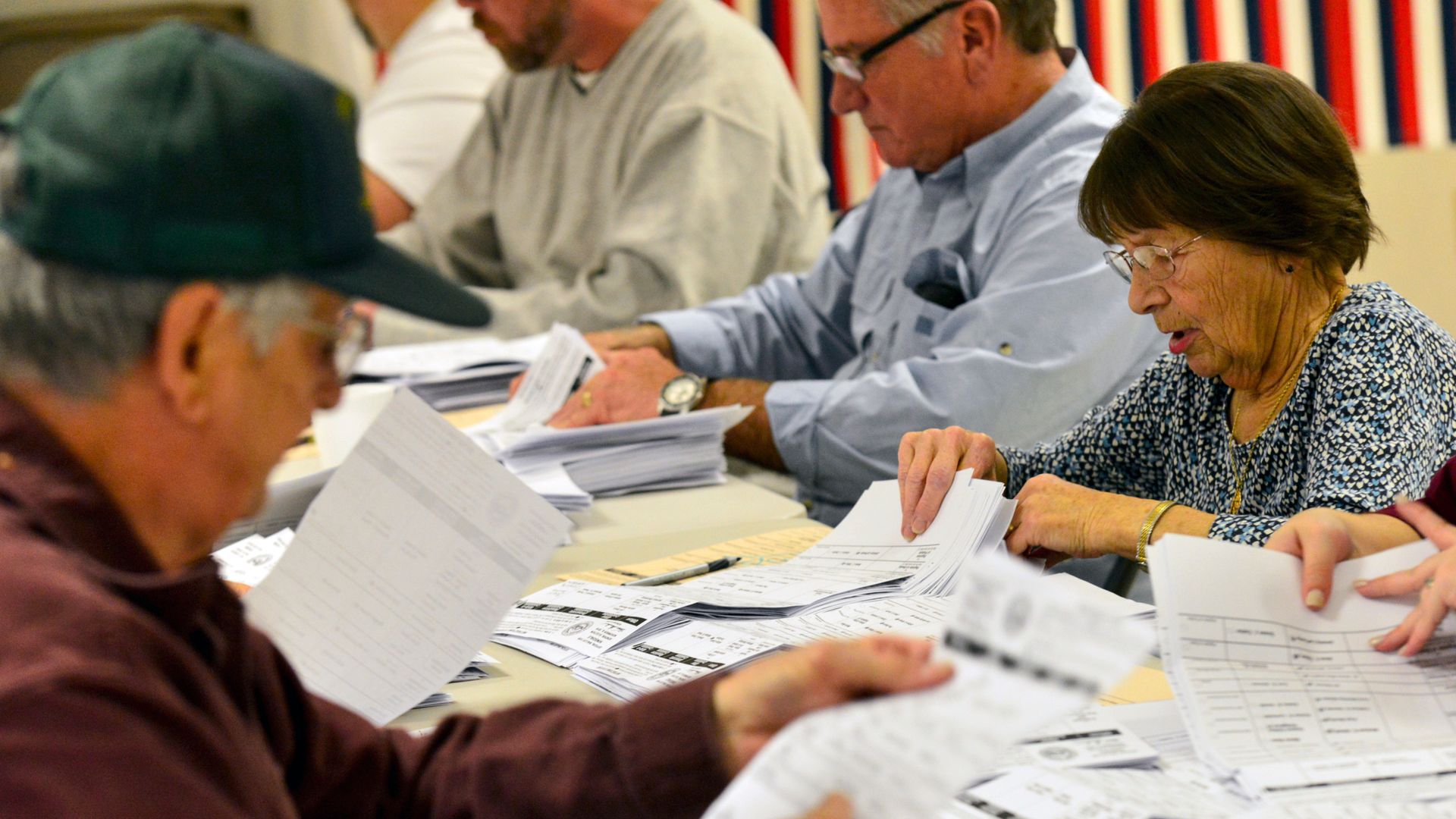Millions of Americans will choose a new president and vice president on Tuesday 5 November.
Election day will see the public flood to the polls and vote in droves to either give Donald Trump a second term in office or make current vice president Kamala Harris the president.
But it’s when voting closes and we move into election night that the action really begins.
Here’s what to expect on election day and night; from how the voting works, to what time results will start to come in and when we can expect a new president to be announced.
Follow latest: US election 2024
What happens on election day?
Voters go to the polls and cast their votes, though around half of registered voters are expected to have already voted before 5 November, according to figures from a poll by our US-partner network NBC News.
They will have done this mainly by post, but there is also the option to vote early in person in some states.
For those who haven’t already voted come election day, polls open early in the morning in each state and close in the early evening.
Americans don’t actually vote directly for who they want to be president and vice president.
Instead, they vote for “electors” – members of the Electoral College – who back their choice of candidate for those roles.
There are a total of 538 electors across the US, and each of the 50 US states has a number of electors depending on its population. This means that somewhere with a big population like California has 54 votes in the Electoral College, while North Dakota, home to about 780,000 people, has just three votes.
The first candidate to 270 Electoral College votes wins the presidency.
In the last election, Joe Biden won by 306 votes to Mr Trump’s 232.
How soon do we get results?
While the winner is often declared on the night of the election, there may not be a final result for days this time around.
Vote counting generally is more complicated in the US than in the UK, partially due to the sheer size of the country; the varying time differences alone make for a longer process.
Traditionally, the result is often known by the time polls close on the West Coast – about 11pm EST and 4am GMT.
But in the 2020 presidential election, it took four days for Mr Biden to be called the winner, with many putting it down to the fact that more people voted by post than usual due to the COVID-19 pandemic.
Rules in some states don’t allow election workers to begin the labour-intensive work of processing postal votes (or “mail-in ballots” as they are known in the US) until election day itself.
Around 46% voted by absentee or mail-in ballot, according to the Pew Research Centre, and even more are projected to do so this year.
Election officials are optimistic that the 2024 vote count will be smoother without the many challenges the pandemic posed to officials in 2020, according to NBC News.
But NBC also warns a handful of key battleground states could keep Americans waiting well beyond election day yet again.
What will you see on the night?
Expect the first results at around midnight UK time.
These will be “projected” results from major US media outlets, based on both exit polls and real votes, which local officials share with reporters as they come in.
Most states have a predictable voting pattern, and it tends to be these states where the results are declared first because even if votes are still being counted, it becomes clear early on that one side has a majority.
You’ll be able to keep up in real-time on Sky News, which will have access to the most comprehensive exit poll and vote-counting results from every state, county and demographic across America through NBC.
What are the swing states to watch?
The contest takes place across 50 states (and the District of Columbia) but it is generally won or lost in a handful of key battlegrounds.
These seven swing states could go either way: Arizona, Georgia, Michigan, Nevada, North Carolina, Pennsylvania and Wisconsin.
All but one of these states voted Democrat in 2020, with the only exception being North Carolina, which Donald Trump won.
But that guarantees nothing; in the 2016 election, Mr Trump won all of these states apart from Nevada.
Due to how close the vote count on swing states tends to be, they are usually declared late.
In 2020, all of their results came several days after election night.
Read more:
How changing religious beliefs in the US could affect election
Your ultimate guide to the US election
What are Trump, Harris, Vance and Walz worth?
Please use Chrome browser for a more accessible video player
Be the first to get Breaking News
Install the Sky News app for free
What happens after a winner is declared?
Whether a winner is declared on election night itself or in the following days, they aren’t officially elected until the electoral votes are formally cast and counted.
Electors cast them on 17 December, they are counted and certified by Congress on 6 January and then the new president will take office after being inaugurated on 20 January.
Unlike the general election in the UK, there is a transition period between the election result and the new president taking over.
During the gap, Mr Biden will continue as president, with the election winner known as the president-elect until the transfer of power in January.
Where will Trump and Harris be on election night?
There is no blueprint for where candidates need to be on election night, but they often give a speech in their home states, unless they are already serving in office.
Mr Trump gave his 2016 election night speech in New York, where he was born, and his 2020 one from the White House, as he was serving as president.
Kamala Harris has her roots in California but is living in Washington DC as she is serving as Mr Biden’s vice president.
Where can I keep up with election night?
There will be live coverage on Sky News throughout the night, led by chief presenter Mark Austin, lead world news presenter Yalda Hakim and US correspondent Mark Stone.
Fellow US correspondents James Matthews and Martha Kelner will be reporting on the ground in the candidates’ home states of Florida and California as the results come in.
As it becomes clearer who will become the next president, chief presenter Anna Botting and presenter Gillian Joseph will join Austin, Stone and Hakim for both the build-up and aftermath of the election.
Helping viewers make sense of the results will be The News Agents podcast host and former Sky News political correspondent Lewis Goodall, who will use advanced data screens to deliver the latest numbers and analysis on the race straight from a Capitol Hill studio.
You can find out more about Sky News’ coverage here.
Keep up with all the latest news from the UK and around the world by following Sky News
Why is election day always a Tuesday?
It’s always the Tuesday after the first Monday in November and has been that way since 1845.
According to History.com, it’s because most citizens worked as farmers and lived far from their polling place in the 1800s, with people often travelling for at least a day to vote.
A two-day window was therefore needed for election day.
Weekends were impractical because most people attended church and Wednesday was market day for farmers, History.com says, making Tuesday the most viable option.
Holding it in the month of November is farming related too, because spring and summer elections were thought to interfere with the planting season and late summer and early autumn ones overlapped with the harvest.
November was seen as the middle ground between farming disruptions and the cold winters, when travelling to polling stations may have proved challenging.








